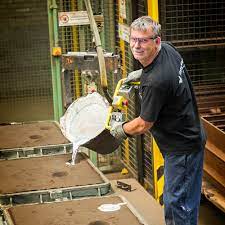When it comes to metal casting techniques, aluminum sand casting stands out as a versatile and widely used method in various industries– it is important to understand the advantages and disadvantages of a casting technique before moving forward to purchase the tooling and begin the process as investing in the wrong process can result in a loss of money and time.
Pros of Aluminum Sand Casting
1. Versatility and Design Flexibility
Aluminum sand casting offers unparalleled versatility and design flexibility. It allows manufacturers to create complex and intricate shapes with ease. Whether it's intricate automotive components or delicate consumer goods, this casting technique can bring designs to life while maintaining precision and detail.
2. Cost-Effectiveness
One of the major advantages of aluminum sand casting is its cost-effectiveness. The process involves the use of readily available materials like sand and molten aluminum. Compared to other casting methods, such as investment casting, the tooling and production costs are relatively low. This makes it an attractive option for manufacturers, especially for medium to low-volume production runs.
3. Lightweight and Strength
Aluminum is renowned for its lightweight nature and impressive strength-to-weight ratio. This makes it a preferred choice in industries where weight reduction is crucial without compromising structural integrity. The use of aluminum sand castings in automotive and aerospace applications helps improve fuel efficiency and overall performance.
Cons of Aluminum Sand Casting
1. Surface Finish
While aluminum sand casting offers remarkable design capabilities, achieving a smooth surface finish can be challenging. The texture of the sand mold can transfer to the final cast part, resulting in a rough or grainy appearance. However, advancements in mold materials and techniques have mitigated this concern to a certain extent.
2. Limited Dimensional Accuracy
Achieving precise dimensional accuracy can be more challenging with aluminum sand casting compared to some other casting methods. Factors such as sand mold compaction and the cooling process can influence the final dimensions of the cast part. However, skilled operators and proper mold design can help minimize dimensional variations.
3. Longer Lead Times
The process of creating sand molds, pouring molten aluminum, and allowing for solidification naturally takes more time compared to certain casting methods like die casting. This longer lead time can impact production schedules, especially when tight deadlines are involved. However, the benefits of versatility and cost-effectiveness often outweigh this drawback.
Conclusion
Aluminum sand casting offers a range of benefits, including design flexibility, cost-effectiveness, thermal properties, and lightweight strength. It enables the production of intricate components and structures across industries such as automotive, aerospace, and consumer goods. While challenges like surface finish, dimensional accuracy, and longer lead times exist, advancements in techniques and technologies continue to address these concerns. Ultimately, aluminum sand casting remains a reliable and widely used manufacturing process that plays a vital role in the world of casting.


No comments yet